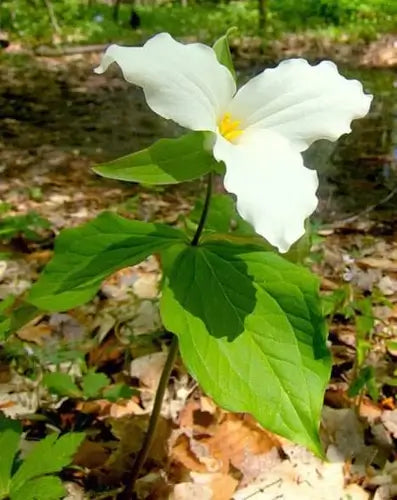Growing Guide for Honeysuckle Vines
Honeysuckle vines (Lonicera spp.) are beloved for their enchanting fragrance, vibrant blossoms, and ability to attract hummingbirds and butterflies to gardens. These versatile plants can adorn fences, trellises, arbors, and walls. With various species and cultivars available, each offering distinct colors and growth habits, honeysuckle vines are an excellent addition to any garden. This comprehensive growing guide delves into the steps required to cultivate and care for honeysuckle vines successfully.
Selecting the Right Honeysuckle Variety
Before diving into the cultivation process, choosing the suitable honeysuckle variety for your garden is essential. There are two main types of honeysuckle vines: the native varieties and the invasive non-native varieties. Native honeysuckle species are generally a better choice as they are well-suited to local ecosystems and less likely to become invasive. Some popular native honeysuckle species include Lonicera sempervirens (Coral Honeysuckle) and Lonicera flava (Yellow Honeysuckle).
Planting
Honeysuckle vines thrive in well-draining soil that is rich in organic matter. Select a sunny to partially shaded location for planting. Before planting, prepare the ground by incorporating compost or well-rotted manure to improve its texture and fertility. Dig a hole slightly larger than the plant's root ball and place it in the hole, ensuring that the top of the root ball is level with the soil surface. Fill the gap with soil and gently tamp it to eliminate air pockets.
Support Structures:
Honeysuckle vines are vigorous climbers requiring a sturdy support structure to thrive. Trellises, arbors, fences, and pergolas are all excellent options. Ensure that the system is firmly anchored in the ground and capable of supporting the weight of the mature vine.
Watering:
Proper watering is crucial during the establishment phase. Water the newly planted honeysuckle vine regularly, keeping the soil moist but not waterlogged. Once the plant is established, it is more drought-tolerant, but it's still essential to provide regular watering during dry spells, especially in hot climates.
Mulching:
Applying a layer of organic mulch over the vine's base helps retain soil moisture, suppress weeds, and maintain a more even soil temperature. Use wood chips, straw, or shredded leaves for effective mulching.
Fertilizing:
Honeysuckle vines benefit from a balanced fertilizer application in the spring, just before new growth begins. A slow-release granular fertilizer with a ratio of 10-10-10 or similar is suitable. Be cautious not to over-fertilize, as this can lead to excessive foliage growth at the expense of flowers.
Pruning:
Regular pruning is essential to maintain the health and appearance of honeysuckle vines. Prune in late winter or early spring before new growth emerges. Remove any dead, diseased, or tangled branches. Additionally, trim any excessive growth to promote air circulation and prevent overcrowding. Pruning also encourages the development of new flowering shoots.
Pest and Disease Management:
While honeysuckle vines are relatively resilient, they can still face pests and diseases. Aphids and whiteflies can occasionally infest the plants, leading to distorted growth and reduced vigor. Hose down the vines with a strong stream of water to dislodge these pests. If the infestation is severe, consider using insecticidal soap or neem oil. Check for powdery mildew, a fungal disease that can affect honeysuckles, and treat it with appropriate fungicides.
Training the Vine:
As the honeysuckle vine grows, gently guide it towards the support structure to encourage it to climb. You can tie the stems loosely using soft garden twine, but avoid binding the limbs too tightly, as this can restrict growth and damage the plant.
Propagation:
Honeysuckle vines can be propagated through cuttings, layering, or by sowing seeds. Softwood cuttings taken in early summer have a good chance of rooting successfully. Layering involves burying a portion of a stem in the soil to encourage it to root, after which it can be detached and planted separately.
Winter Care:
Native honeysuckle vines are generally hardy and can withstand winter conditions in their native range. However, providing a layer of mulch around the vine's base in colder climates can help protect the roots from freezing temperatures.
Conclusion
Honeysuckle vines are a delightful addition to any garden, offering beauty and fragrance and attracting beneficial pollinators. You can enjoy the charming allure of honeysuckle vines for years with proper planting, support, care, and maintenance. Whether adorning a trellis, climbing a fence, or enhancing an arbor, these versatile plants bring a touch of nature's elegance to your outdoor space.
























































 " alt="Featured Collection Perennials " />
" alt="Featured Collection Perennials " />
 " alt="Featured Collection Ferns " />
" alt="Featured Collection Ferns " />
 " alt="Featured Collection Live Moss " />
" alt="Featured Collection Live Moss " />
 " alt="Featured Collection Trees " />
" alt="Featured Collection Trees " />
 " alt="Featured Collection Shrubs " />
" alt="Featured Collection Shrubs " />
 " alt="Featured Collection Vines " />
" alt="Featured Collection Vines " />
